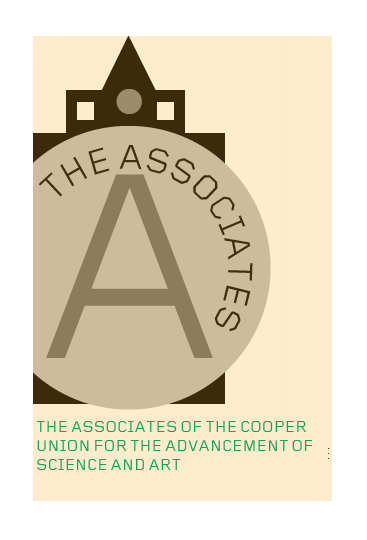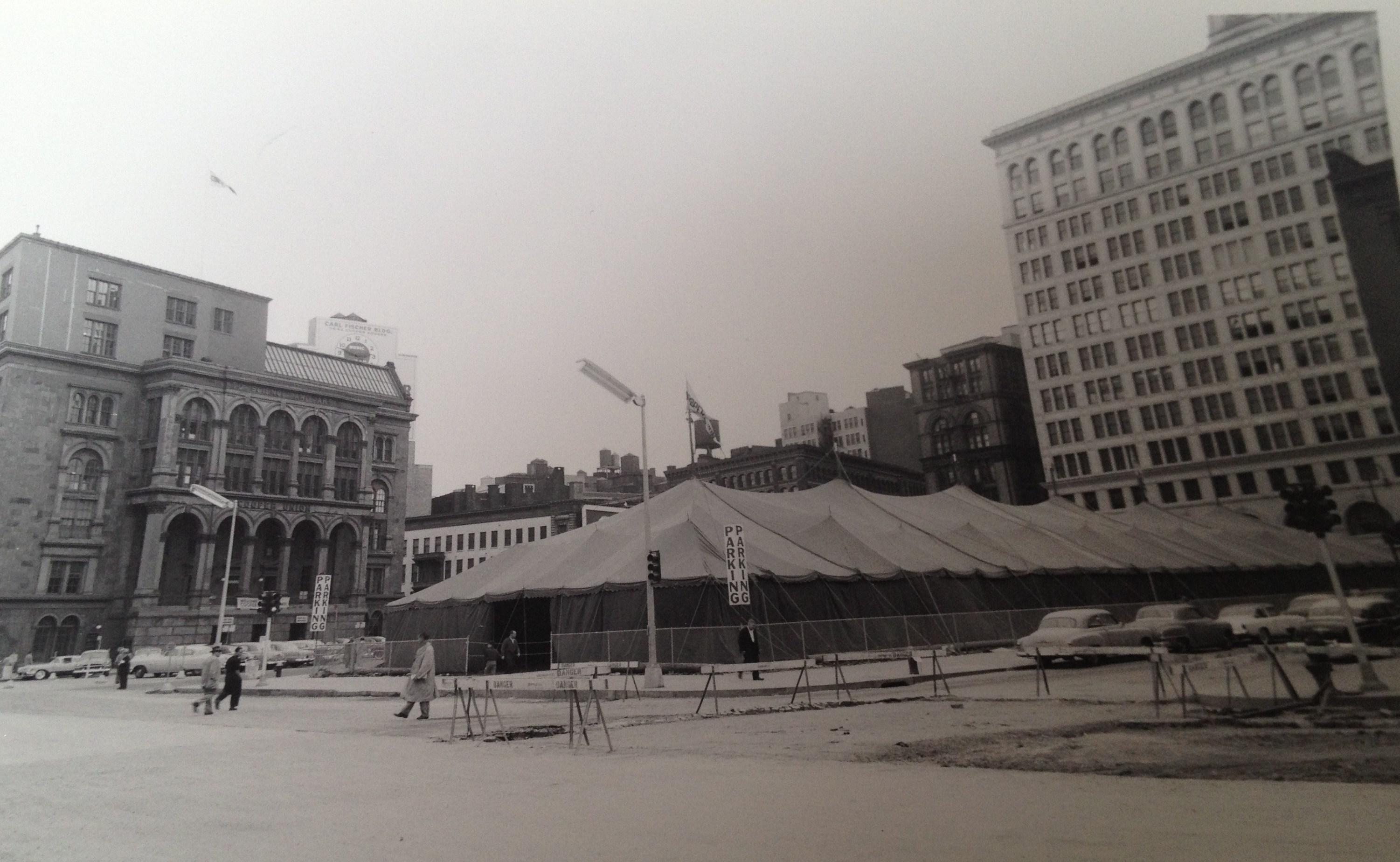 The original Charter and Deed of Trust for The Cooper Union called for the establishment of the “Associates of The Cooper Union for the Advancement of Science and Art.” Who are these Associates and were they ever formed? References to the Associates in the Charter and Deed are summarized in the First Annual Report of the school (1859-1860): Continue reading
The original Charter and Deed of Trust for The Cooper Union called for the establishment of the “Associates of The Cooper Union for the Advancement of Science and Art.” Who are these Associates and were they ever formed? References to the Associates in the Charter and Deed are summarized in the First Annual Report of the school (1859-1860): Continue reading
Tag Archives: Peter Cooper
Peter Cooper and McSorley’s Ale House
I was recently reading sections of Up In the Old Hotel, which anthologized Joseph Mitchell’s writings for the New Yorker. It included a 1940 article on “McSorley’s Wonderful Saloon“, where Peter Cooper frequented:
“Mr. Cooper in his declining years, spent so many afternoons in the back room philosophizing with the workingmen that he was given a chair of his own; it was equipped with an inflated rubber cushion. (The chair is still there; each April 4th for a number of years after Mr. Cooper’s death, on April 4, 1883, it was draped with black cloth.) Also like other steadfast customers, Mr. Cooper had a pewter mug on which his name had been engraved with an icepick. He gave the saloon, a life-sized portrait of himself, which hangs over the mantel in the back room. It is an appropriate decoration, because, since the beginning of prohibition, McSorley’s has been the official saloon of Cooper Union students. Sometimes a sentimental student will stand beneath the portrait and drink a toast to Mr. Cooper.”
After the visit to Peter Cooper’s Grave on February 12, 2012, some Friends of Cooper Union, gathered for a drink at this watering hole. (FYI: McSorley’s Ale is vegan). Some things have changed since Peter Cooper’s days at McSorley’s. Most notably, the inclusion of women starting in the 1970. (Previous motto was, “Good Ale, Raw Onions and No Ladies.”). Cooper Union, in contrast, opened its doors to women since its inception in 1859, and never discriminated by race, gender, creed or class.
McSorley’s other motto “Be Good or Be Gone,” is still in effect, and Cooper’s table, chair, and portrait are still on display. The lyrics of a song about Peter Cooper’s Table are also mounted on the wall.
For more information about the current situation facing Cooper Union: visit the Friends of Cooper Union website. For additional posts on Cooper Union click here.
A Visit to Peter Cooper’s Grave at Green-Wood Cemetery

On February 12, 2012, Friends of Cooper Union organized a visit to Green-wood Cemetery in Brooklyn to pay respects to Peter Cooper on his 221st Birthday. Cooper, his wife, children and their families are also buried there on a private grassy mound, on a small traffic island. Much chiseling was needed to carve these beautiful words that describe Cooper’s contributions to society. Here’s what was written, taking up multiple sides of this gravestone monument:
PETER COOPER
PATRIOT. PHILANTHROPIST. SAGE
PIONEER UNDER THE FREE
INSTITUTIONS OF A NEW NATION IN WORKS OF
INDUSTRIAL ENTERPRISE
AND OF FAR SIGHTED BENEVELENCE.
FOUNDER OF THE COOPER UNION
FOR THE ADVANCEMENT
OF SCIENCE AND ART, WHICH HE
CONCEIVED WHEN A POOR
APPRENTICE AND REALIZED
AFTER MANY YEARS OF
SACRIFICE AND DEVOTION
THUS BECOMING THE FIRST
IN AMERICA PERSONALLY
TO ADMINSTER LARGE PRIVATE
FORTUNE FOR THE PUBLIC GOOD.
The State of Union
 In discussing his original wishes for Cooper Union in his unpublished memoir, Peter Cooper stated that the ”subject of the science of government should forever be one of preeminent importance in the course of instruction.” A gentleman by the name of William Foster, then 92 years old, read about Cooper’s intention, and wrote to Peter Cooper to tell him how much he agreed with this concept. Foster had witnessed massacres in the French Revolution, and told Cooper that America was on the verge of a violent struggle (the Civil War), and “who ever lived to see that struggle would witness a scene that would leave as mere gymnastics the massacre that he had witnessed in France,” Cooper recalled:
In discussing his original wishes for Cooper Union in his unpublished memoir, Peter Cooper stated that the ”subject of the science of government should forever be one of preeminent importance in the course of instruction.” A gentleman by the name of William Foster, then 92 years old, read about Cooper’s intention, and wrote to Peter Cooper to tell him how much he agreed with this concept. Foster had witnessed massacres in the French Revolution, and told Cooper that America was on the verge of a violent struggle (the Civil War), and “who ever lived to see that struggle would witness a scene that would leave as mere gymnastics the massacre that he had witnessed in France,” Cooper recalled:
“So deeply impressed was I with that terrible fear of that approaching revolution that I placed on the front of the Cooper Union the single solitary word “Union,’ and on the other end I placed the words of “Science and Art,” having a determination in my own mind, if I ever lived to finish the building, I would invite all the Governors of the Southern States and all the Governors of the Northern states to meet me here in New York and dedicate that building to Union.”
Cooper had further plans to get all the Northern Governors and Southern Governors to tour each other’s states, “hoping thereby to make them better acquainted with justice and to let them see the decided advantages that could be obtained by a more perfect union.” Continue reading
Make Peter Proud
Edward Minskoff, the developer of 51 Astor Place (the former home of Cooper Union’s Engineering Building ) recently revealed renderings of the future site—a 12 story tower and public plaza, designed by Fumihiko Maki. CURBED, launched its own design contest for alternative ideas for this space and the winning entries were posted here.
I was recently in the Cooper Union archives looking at photos from the late 1950s just before the college’s centennial. Then, 51 Astor Place looked surprisingly similar to what it does now– empty. In 1956, The Cooper Union Alumni Association took advantage of this this vacant lot to host an Alumni Day Luncheon. A circus tent was pitched on site, and “800 hungry alumni” were fed.
